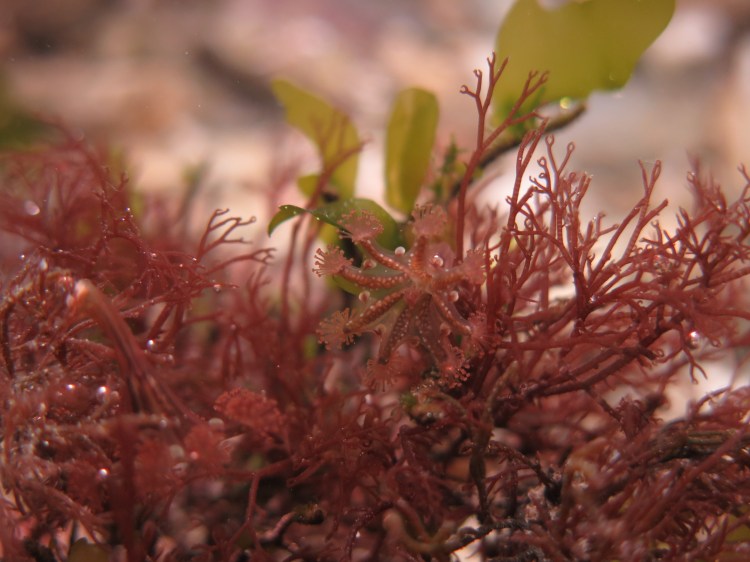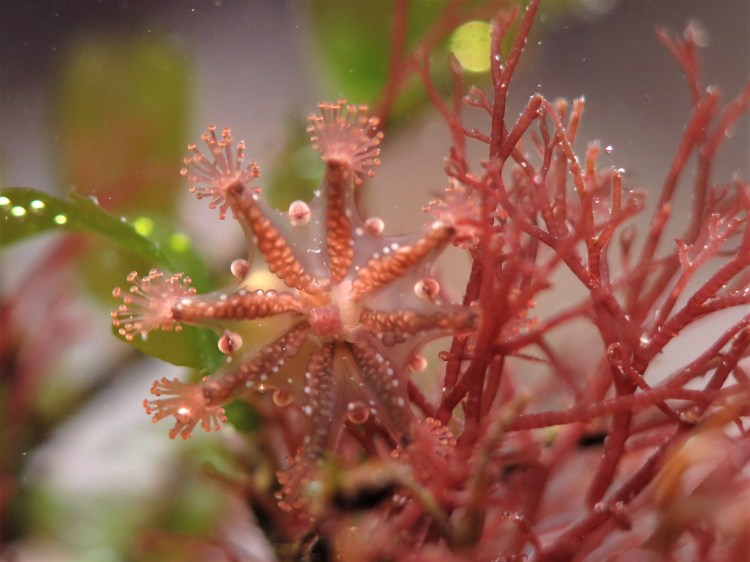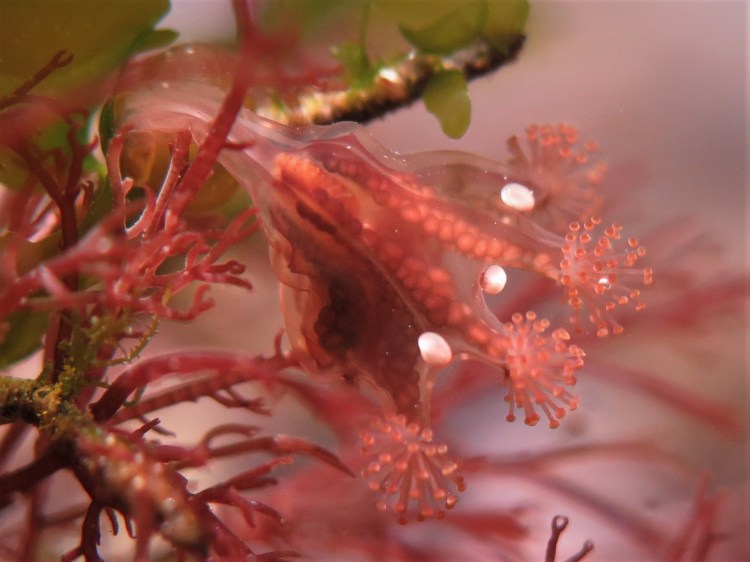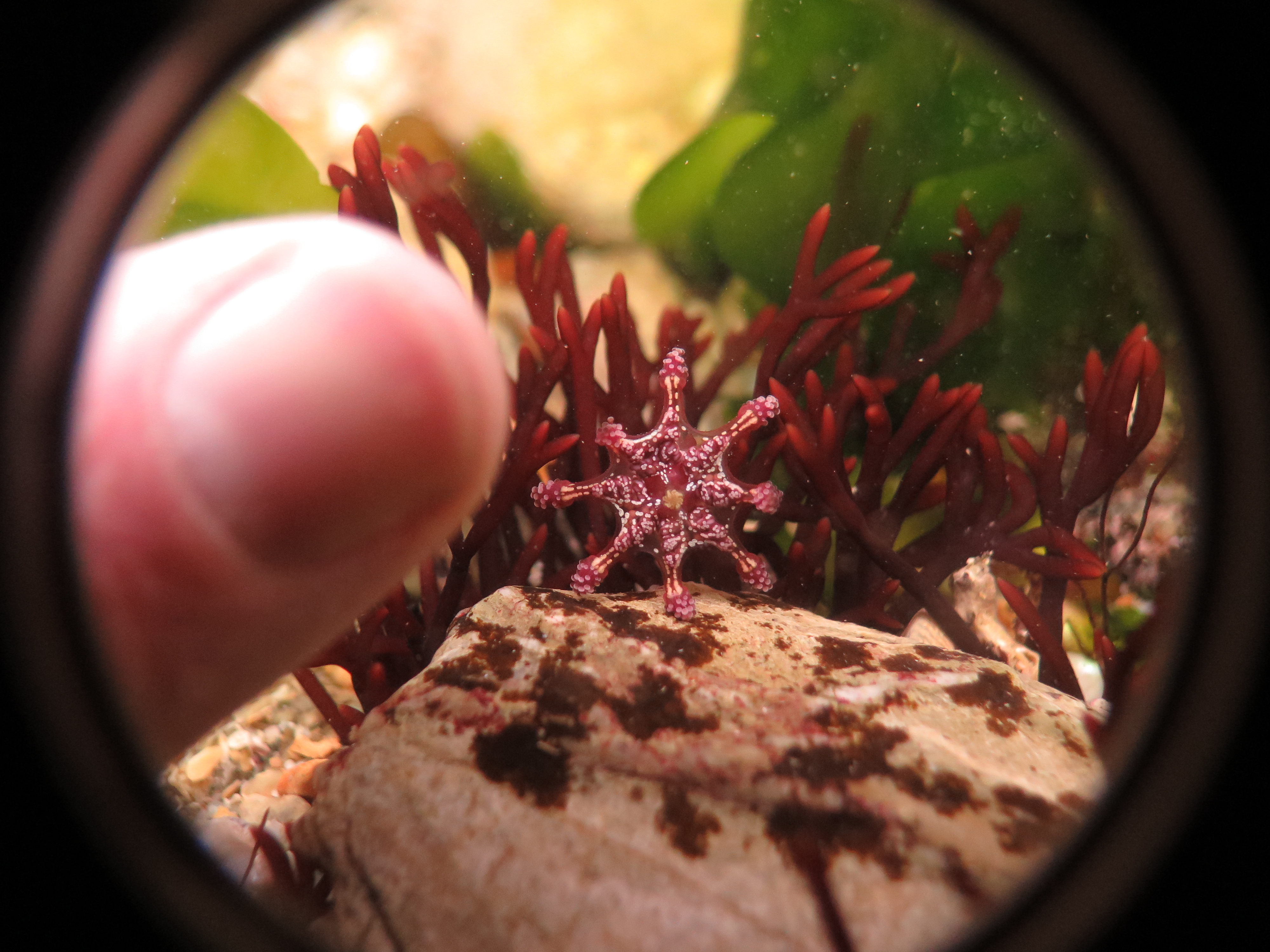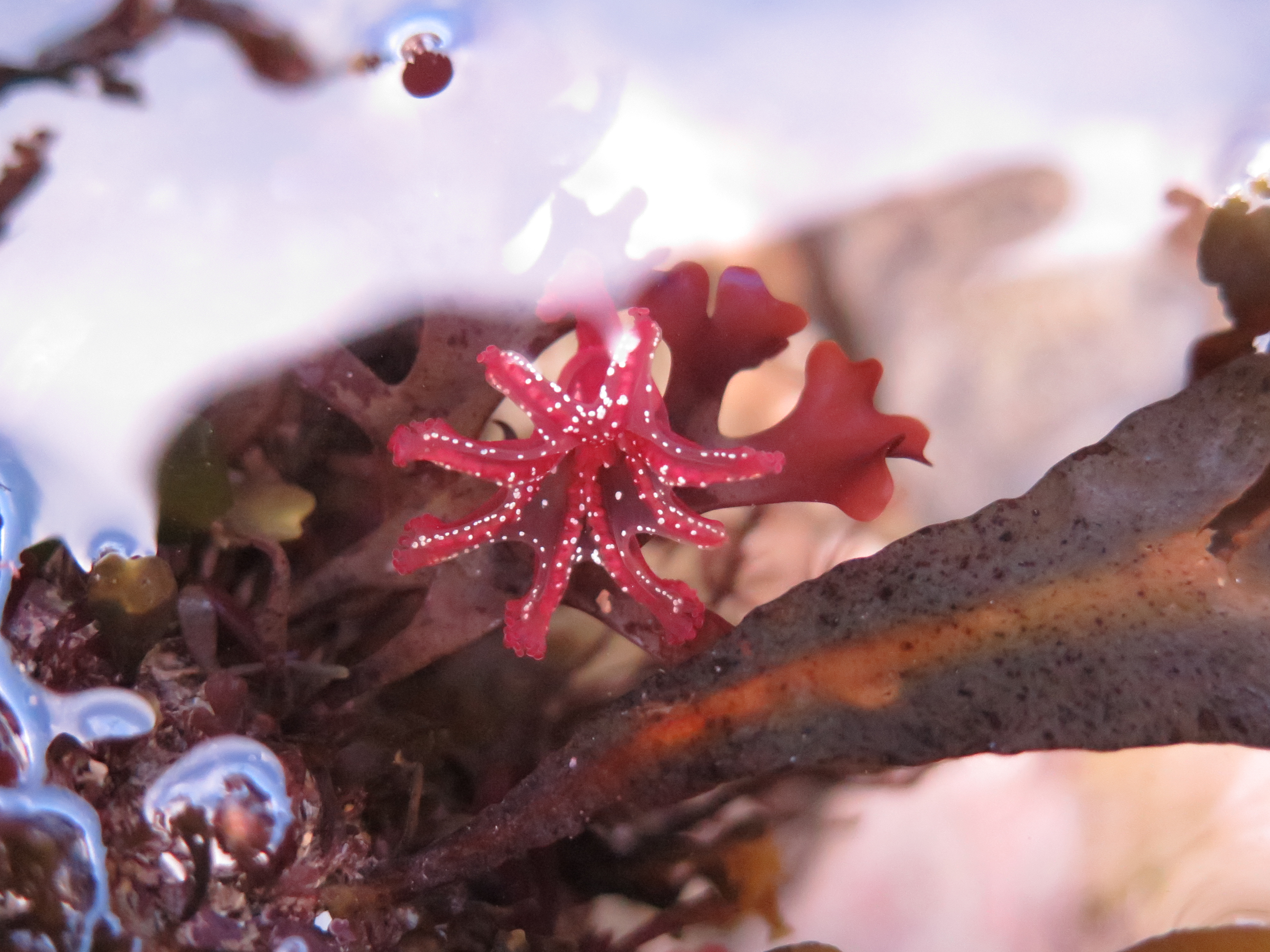
It was a nice day and a good low tide last Wednesday and so I decided to go for a snorkel; I was glad I did! Last year, I had been trying to take photos of this weird little animal, Candelabrum cocksii, but failed miserably, this time it worked. It is a hydrozoan that was first described in Victorian times on the exact beach I always go snorkelling here in Falmouth. It is tiny (see last pic) and lives underneath rocks, so it goes mostly unnoticed (and therefore does not have a common name). To take this photo, I had to do some ‘underwater rockpooling’, turning over a rock to find them. I am not sure what the deal is with these guys; I know the white bulbous structures at the bottom are reproductive structures, and the reddish bit at the top is for feeding (this bit can be stretched out quite a lot). It is colonial just like the Portuguese Man O’War. Please correct me if I am wrong hydrozoan experts! Shout out to David Fenwick and his ID site aphotomarine.com, which I highly recommend.
Other notable finds were stalked jellyfish Calvadosia cruxmelitensis and my very first Wentletrap (which is a Dutch word: wenteltrap=spiral staircase) Epitonium clathrus. As I had my macrolens on the camera I could not shoot any general impressions but the pools started to look beautiful again. The big Wireweed and Thong weed plants were all gone (new ones emerging) and the red seaweeds (Sphaerococcus, Plocamium, Chylocladia) were already quite big.
It was great to be back in the water today and it is my New Year’s resolution to spend a lot more time underwater than I did in 2021! Who knows I will even learn how to use strobes. A happy 2022 to all blog readers!


